

Compact Muon Solenoid
LHC, CERN
| CMS-EXO-12-037 ; CERN-PH-EP-2014-263 | ||
| Search for long-lived particles that decay into final states containing two electrons or two muons in proton-proton collisions at $\sqrt{s}$ = 8 TeV | ||
| CMS Collaboration | ||
| 25 November 2014 | ||
| Phys. Rev. D 91 (2015) 052012 | ||
| Abstract: A search is performed for long-lived particles that decay into final states that include a pair of electrons or a pair of muons. The experimental signature is a distinctive topology consisting of a pair of charge dleptons originating from a displaced secondary vertex. Events corresponding to an integrated luminosity of 19.6 (20.5) fb$^{-1}$ in the electron (muon) channel were collected with the CMS detector at the CERN LHC in proton-proton collisions at $\sqrt{s}$ = 8 TeV. No significant excess is observed above standard model expectations. Upper limits on the product of the cross section and branching fraction of such a signal are presented as a function of the long-lived particle's mean proper decay length. The limits are presented in an approximately model-independent way, allowing them to be applied to a wide class of models yielding the above topology. Over much of the investigated parameter space, the limits obtained are the most stringent to date. In the specific case of a model in which a Higgs boson in the mass range 125-1000 GeV/$c^2$ decays into a pair of long-lived neutral bosons in the mass range 20-350 GeV/$c^2$, each of which can then decay to dileptons, the upper limits obtained are typically in the range 0.2-10 fb for mean proper decay lengths of the long-lived particles in the range 0.01-100 cm. In the case of the lowest Higgs mass considered (125 GeV/$c^2$), the limits are in the range 2-50 fb. These limits are sensitive to Higgs boson branching fractions as low as 10$^{-4}$. | ||
| Links: e-print arXiv:1411.6977 [hep-ex] (PDF) ; CDS record ; inSPIRE record ; Public twiki page ; CADI line (restricted) ; | ||
| Figures | |
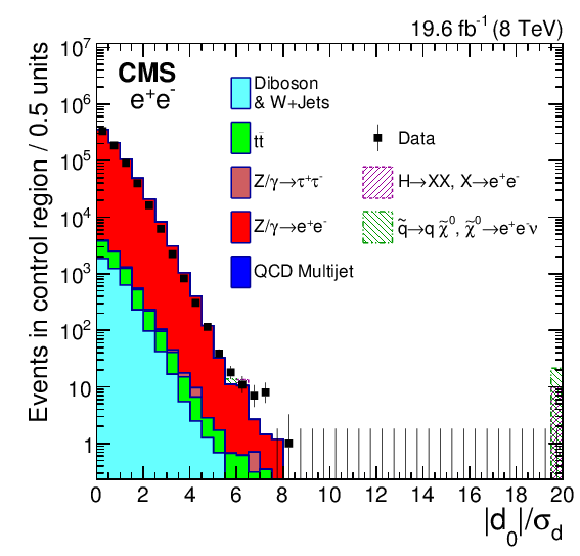
png pdf |
Figure 1-a:
|
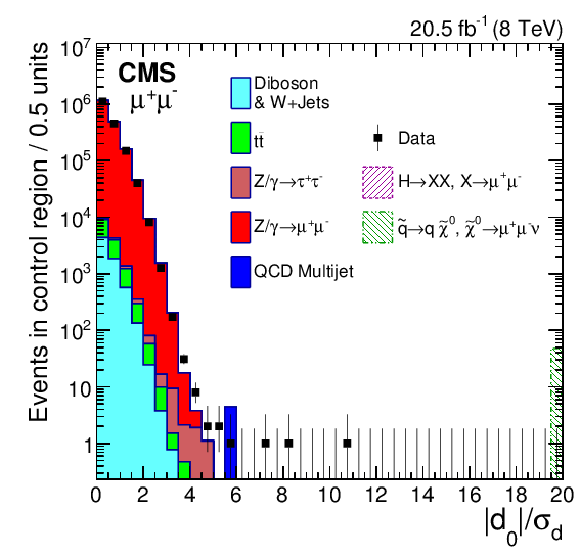
png pdf |
Figure 1-b:
|
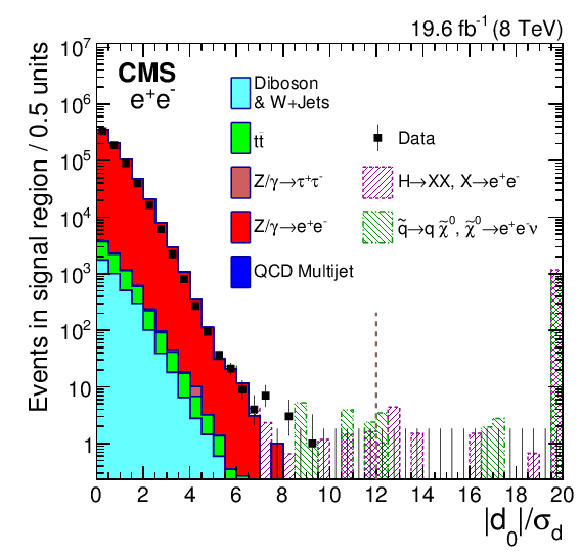
png pdf |
Figure 1-c:
|

png pdf |
Figure 1-d:
|
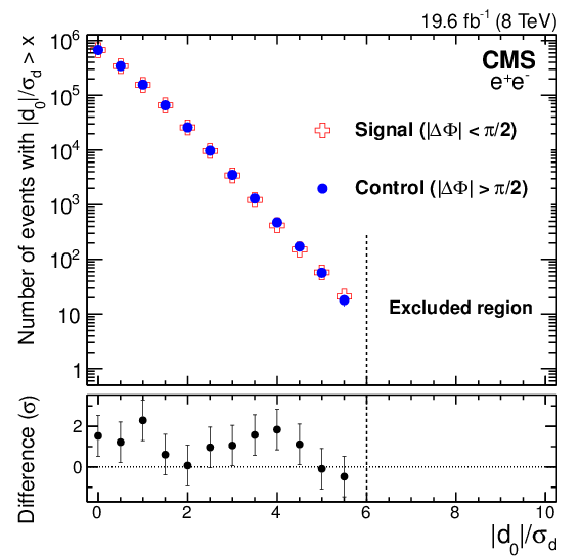
png pdf |
Figure 2-a:
|
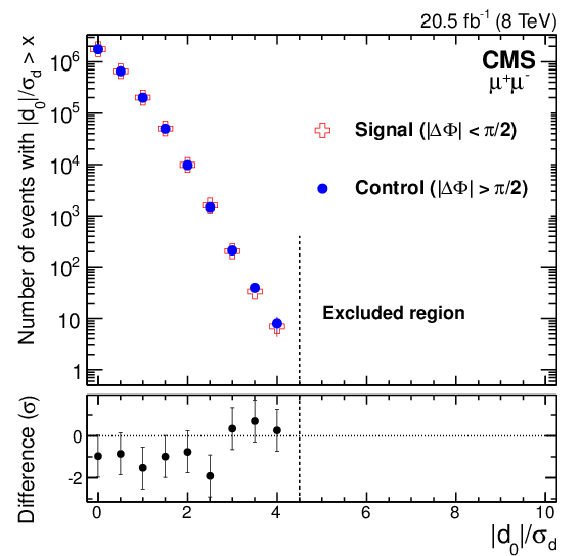
png pdf |
Figure 2-b:
|
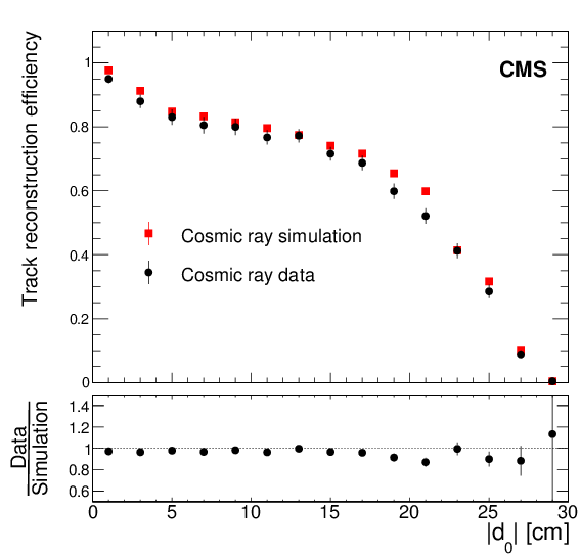
png pdf |
Figure 3-a:
|
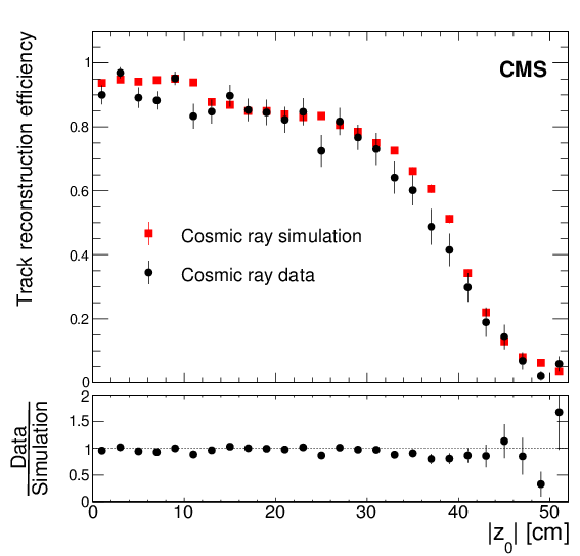
png pdf |
Figure 3-b:
|
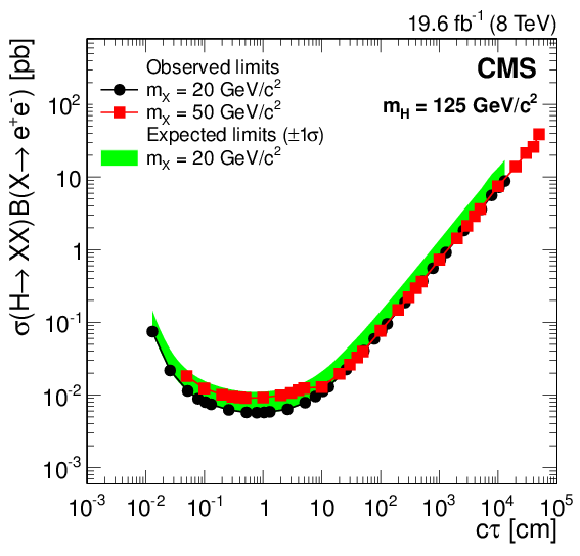
png pdf |
Figure 4-a:
|
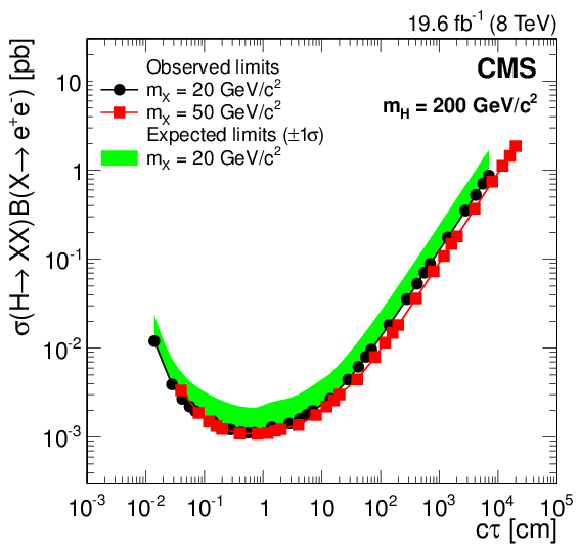
png pdf |
Figure 4-b:
|

png pdf |
Figure 4-c:
|
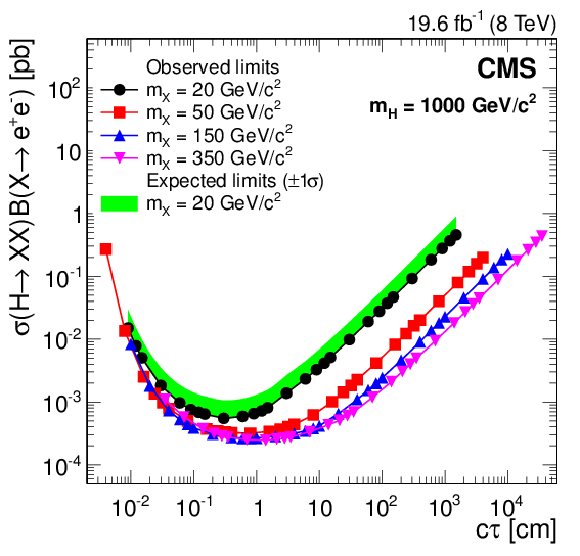
png pdf |
Figure 4-d:
|
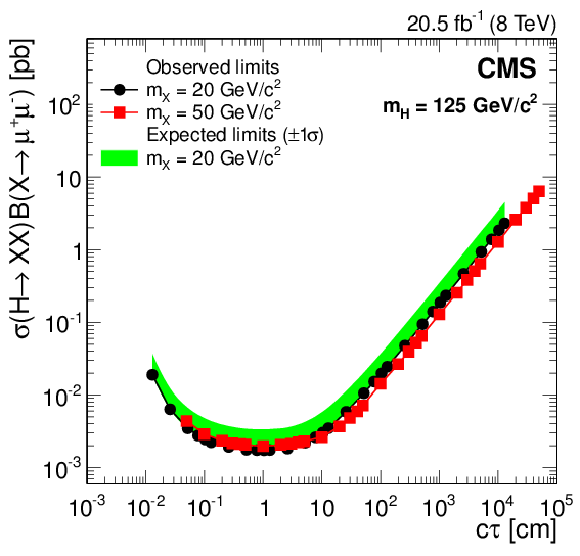
png pdf |
Figure 5-a:
|
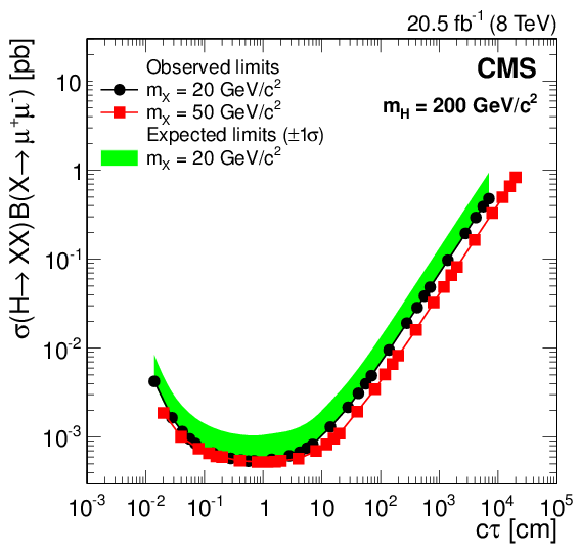
png pdf |
Figure 5-b:
|

png pdf |
Figure 5-c:
|
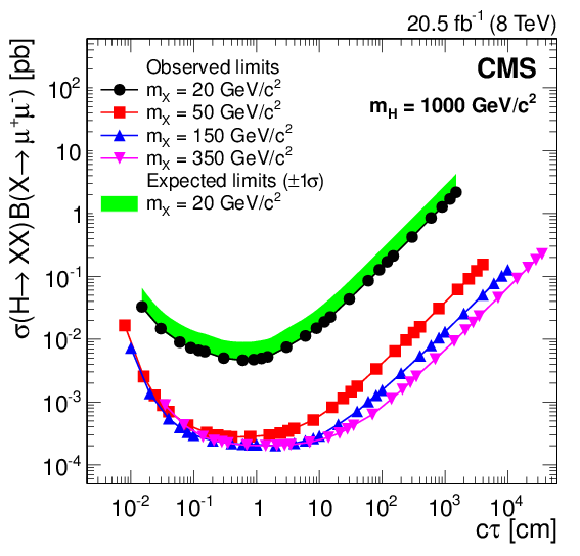
png pdf |
Figure 5-d:
|

png pdf |
Figure 6-a:
|
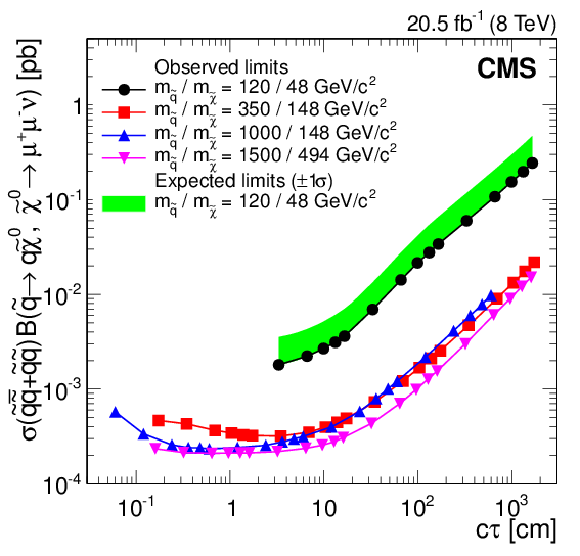
png pdf |
Figure 6-b:
|
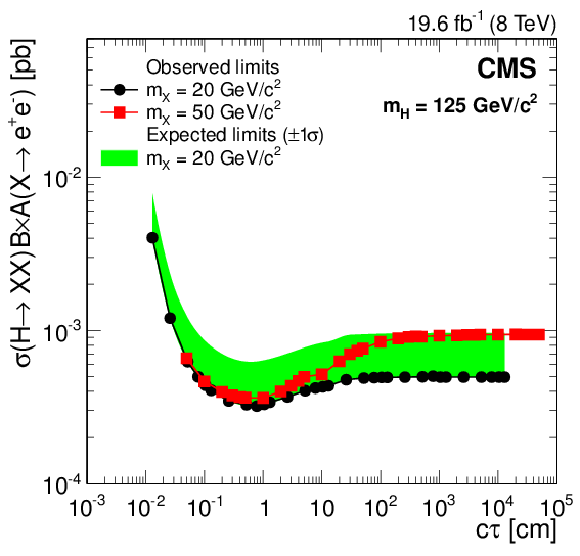
png pdf |
Figure 7-a:
|
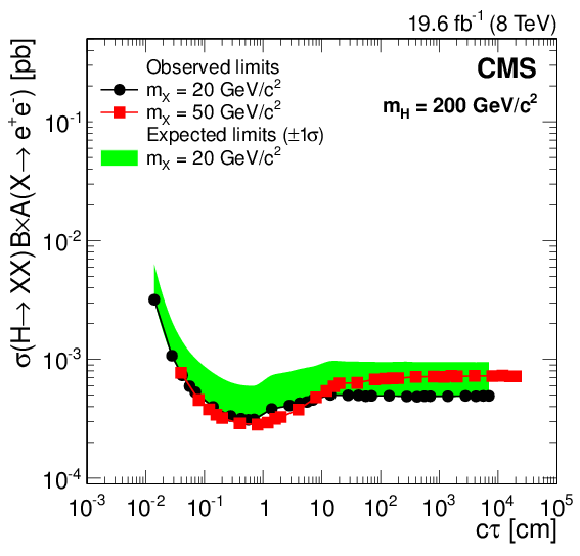
png pdf |
Figure 7-b:
|
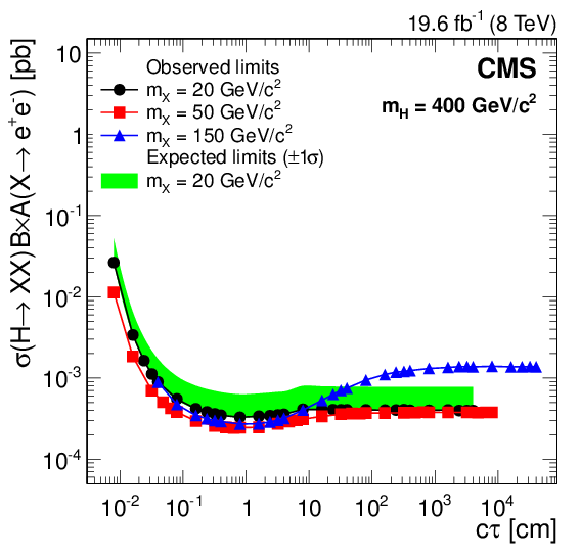
png pdf |
Figure 7-c:
|
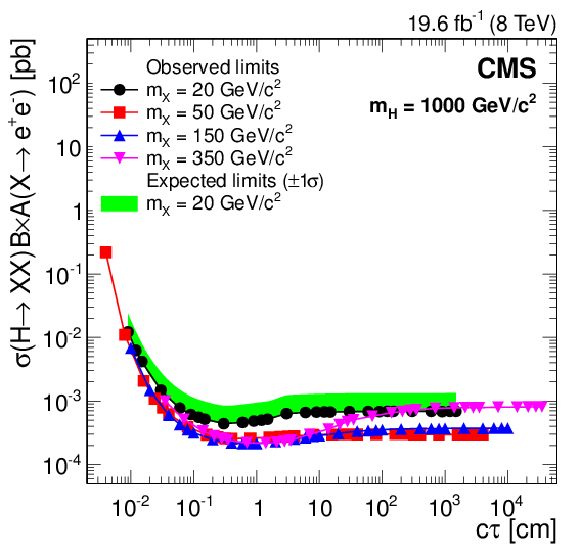
png pdf |
Figure 7-d:
|

png pdf |
Figure 8-a:
|
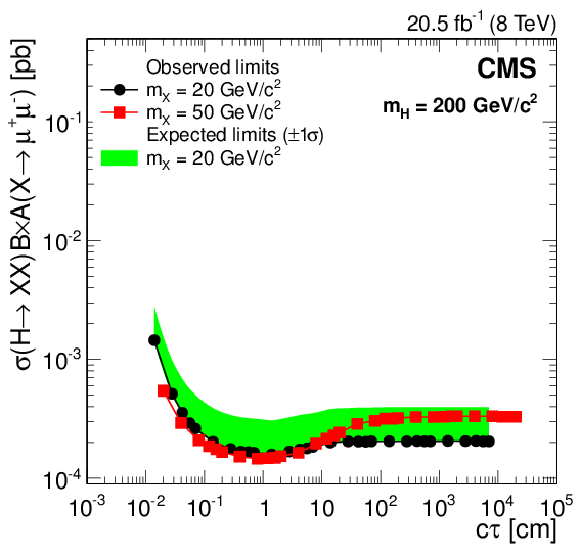
png pdf |
Figure 8-b:
|
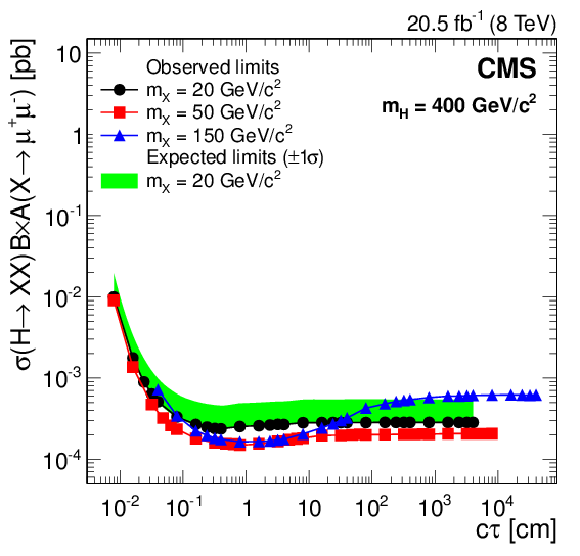
png pdf |
Figure 8-c:
|

png pdf |
Figure 8-d:
|

png pdf |
Figure 9-a:
|

png pdf |
Figure 9-b:
|

|
Compact Muon Solenoid LHC, CERN |

|

|

|

|

|

|